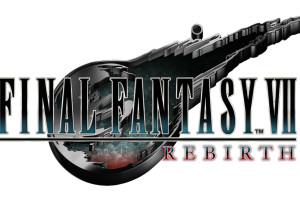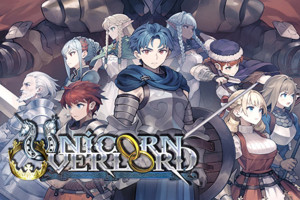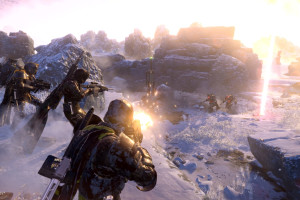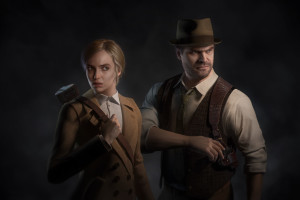Rise of the Rōnin Review: Gameplay Impressions, Videos and Top Features
March 21, 2024
Rise of the Rōnin is an ambitious attempt at drifting away from comfort zones by developer Team Ninja.
An action RPG from a powerhouse studio that produced recent success stories such as Nioh 2 and Wo Long: Fallen Dynasty, Rise of the Rōnin represents Team Ninja pursuing an open world experience quite different than their past efforts in some key respects.
As a history-based Samuari experience, Rise of the Rōnin must grapple with modern game design, the team's past successes and modern heavyweights in the same space—headlined by Ghost of Tsushima, of course.
It's no simple task, and yet, if one had to assemble a list of teams capable of making it happen, Team Ninja, backed by Sony, would be right up there near the very top.
Graphics and Gameplay
Rise of the Rōnin is certainly not Ghost of Tsushima in a visual sense, though few in the video game space come close. But that's the comparison many will make.
Viewed through that lens, Rōnin falls short. But it's a classic example of jaw-dropping visuals not always equating to a fun, meaningful experience. The game won't escape comparisons, yet looks fantastic for what it is, anyway.
The cities of Yokohama, Kyoto and Edo are visually interesting in their diversity and modern influences from overseas for the time period. Combat is grisly, bloody and brutal.
And the swooping countryside isn't a slouch either, not with wide-open spaces, a colorful palette and detail that create immersion. Overall, the shadow and lighting are up to par with most modern standouts and the sound design is superb, with the clang of steel in combat and most of the voice acting solid.
Along these many areas, players will traverse by foot, horse or even glider. There's also the option to fast travel, which feels like a must at times given the scope of the world.
Combat will feel at least somewhat familiar for players of prior Team Ninja games or similar. While there are things like era-specific firearms, melee combat with Katantas and other close-range weapons rightfully deserve the bulk of the attention.
This area of combat leans heavily into the precise timing for counters while playing around a Ki gauge. That effectively functions as stamina meter, which depletes while blocking attacks. Parrying (Counterspark) or damaging an enemy depletes their own Ki meter. As one can probably predict, once this bar is gone, characters are vulnerable to bigger damage attacks.
But again, parrying is a huge chunk of the system. Yet there's a brutal gamble in attempting parries, though. Unlike other similar games, where mistiming a parry will still result in a block that simply drains a meter, missing on a parry here will result in a whiffed sort of lunge, leaving the player vulnerable to major damage. It's a little clunky, as is the addition of a handful of stances that are strong and/or weak against each other, impacting the amount of damage a player does to an opponent's posture.
There's also an element of stealth to encounters out in the world. It feels fun and there are some grisly executions, true enough. But it doesn't seem that players can go the entire experience with this approach, not when certain encounters force players into combat checks.
While the typical Samauri games and Team Ninja comparisons reign right now, a more apt one might just be Dark Souls due to the sheer difficulty.
What's interesting is that this will vary greatly by the player. It feels like there is an effort here to be more simplistic with attacks and combos, using fewer buttons to appeal to a wider playerbase. It's an amicable stab at becoming more accessible as a possible entry point to more complicated other releases, though whether it serves as such is tough to say.
Of note, those katanas, firearms and otherwise each come with their own Combat Styles with more refined sub-weapon classes, so there's plenty of diversity in approach and feel to a player's weapon of choice.
Story and More
Rise of the Rōnin takes place in the "Bakumatsu" period in the mid-19th century as Japan's isolation ends, taking the empire out of the era of the Tokugawa Shogunate government.
A historical drama including real-life figures, players eventually join the Blade Twins within the anti-Shogunate faction called the Veiled Edge, where they then steer some of the narrative through choices.
While players do customize the protagonist, he comes with his own layered backstory, personality and goals. It's worth pointing out that the character creator is refreshingly fantastic with loads of options.
What's really interesting is that through dialogue and story-critical choices, players have a pretty big say in how the game plays and turns out.
Much of this centers around side characters and the player's relationship to them. As a brief example, one character encountered might be one of two able to accompany the player on a mission—provided the player makes the right choices beforehand and said character doesn't end up dead or against the player.
That's purposefully vague, but there's more time than expected spent on potentially teaming up with characters. And players seem to have a bigger say in the narrative than expected, which is pretty compelling considering they can side with the more traditional parties who want to remove the Westerners from the land or ally with the newcomers.
The somewhat mild surprise that is relationships with characters met out in the world doesn't extend to side quests, though.
Unfortuantley, this is sort of where things start to fall apart. A chunk of the side activities are rote in nature, like going to a certain location to collect an item or going to another location to slay a few enemies. Foregetable open-world stuff, really.
Open-world stuff also includes progressing through a standard map. Forging a better bond with an area through doing things like helping civilians against bandits results in more details revealed on the map. But increasing the bond is run-of-the-mill tasks like stumbling upon an occupied village, clearing out the bandits and getting a little cutscene of the villagers returning happy.
Rōnin sort of arrives at a weird time for open-world games where tolerance for the same old formula is dwindling.
Ghost of Tsushima's open-world activities weren't all that innovative either, but it had the benefit of releasing before more world fatigue set in, never mind being super-duper polished, which Rōnin is not.
To its credit, Rōnin lets the player acquire Longhouses as spaces and play minigames such as firing ranges and challenge courses with gliders. But again, it feels a little late to the party, especially when compared to games that are masters of this area, such as Like a Dragon: Infinite Wealth.
For progression, Rōnin uses a standard experience system to level and improve, but also a Karma system that deals with the nature of video game-styled deaths. Losing the Karma on death is a way to keep some of the Soulslike feel, which is nice.
Beyond that, players will level four core stats across skill trees, which unlock passive abilities and bonuses. This, after loosely picking a "class' at the start of the game. Think, charisma influences success rate in conversations sort of thing. Similar things players have seen elsewhere for the gear system, which includes full-set bonuses and the like.
The game earns high marks for customization, at least, given the fantastic initial editor that remains strong throughout. And it nails a transmogrification system, avoiding a pitfall many games inexplicably still jump into willingly.
The co-op is a boon for the release, too, as up to three total players can play (or replay from a Longhouse) main story missions. This includes friends, random players, or A.I.-controlled characters, with the A.I. players despawning as real players join. If there's a drawback, it's that there doesn't seem to be open-world combat, but only restricted to missions, so no romping around causing trouble.
These little things, like nailing customization, a transmog system and co-op, are really impressive and give the game serious legs.
And in a nice testament to the game's desire to be as appealing to all audiences as possible, there are a wide range of options tucked into the menus and three difficulty settings.
There are some issues on the performance front, though, including framerate stutters and notable pop-ins from a distance in the open world. Some wonky animations (the horses will go viral, but things just up and disappearing, such as the glider, are noticeable, too) are peppered throughout the experience, too, especially when out in the open world.
Conclusion
Rise of the Rōnin feels a touch outdated. Had it released three or four years ago, especially ahead of Ghost of Tsushima, it would have been a stunning feat and can't-miss affair.
Unfortunately, it's arriving now without the polish of Ghost, nor the character-driven story of similar games such as the Like A Dragon series, while open-world fatigue for some of the things it does has hit a peak. Even worse, 2023 was an all-timer for game releases and 2024 looks to give it a run for its money—to the point Rōnin is releasing right alongside Dragon's Dogma 2.
And yet, Rise of the Rōnin isn't a bad game, either. It's hard to slam a studio too much for boldy leaving a comfort zone. Appealing to more players, doing great in areas like customization and choices that actually matter throughout a story's tale is no small feat.
Like the reliance on parries within the game, Rōnin is a mistimed release and certainly doesn't scream typical "PlayStation 5" exclusive. That's unfortunate, because if one can endure the issues, there's a charm and fun factor worth enjoying.
B/R Recommends





























